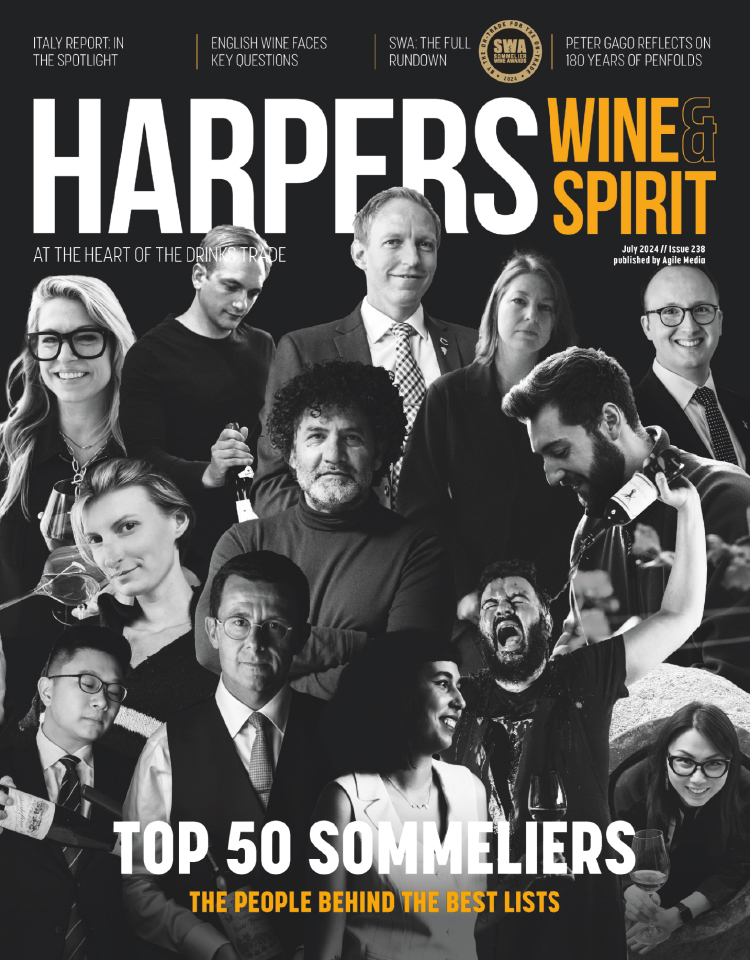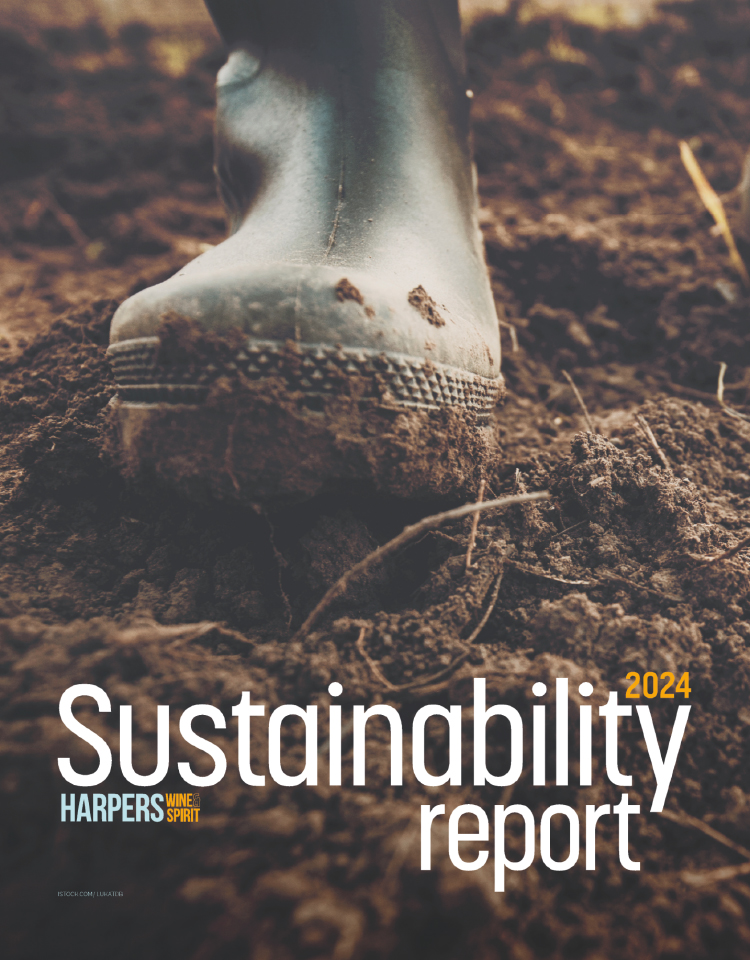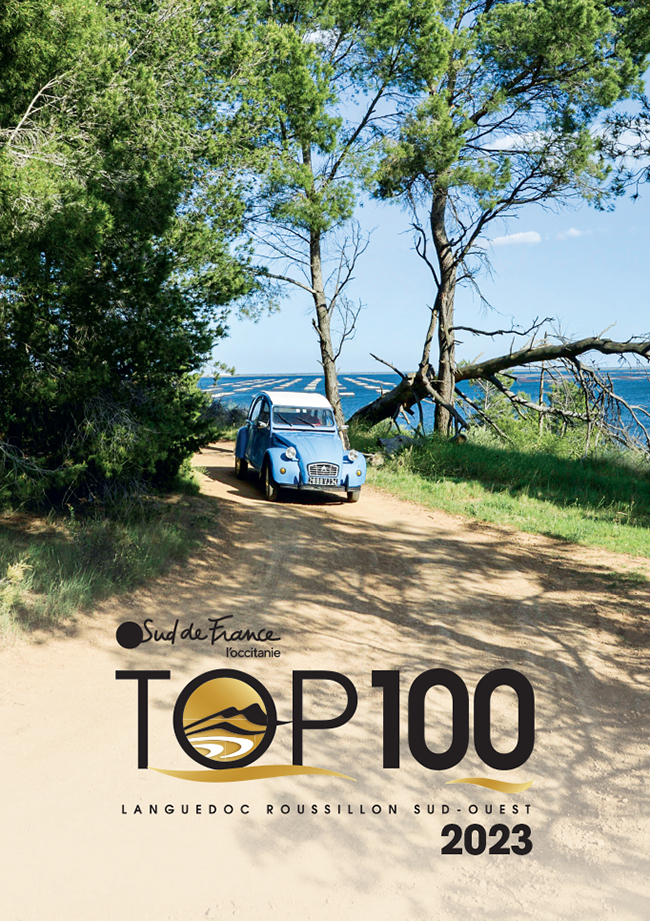THE HEAT IS ON
Is Armagnac making a red-hot impression in the UK, or has the market proved to be fireproof? Jo Burzynska reports on attempts to widen the appeal of Armagnac
The alambics are alight all over Armagnac this month. But while the fires fuelling its traditional stills during this main period of distillation remain hot, the market for Armagnac, like so many other dark spirits, is merely lukewarm. As competition from other spirits and Armagnac's closest rival, Cognac, hots up in the UK (its main export market), the initiatives so needed by this category are at last beginning to emerge. New products, promotions and a timely return of its generic campaign should hopefully mean that one of France's oldest great spirits is not left out in the cold. Production of Armagnac has decreased in recent years, as have its exports to the UK. In 1995/96 exports stood at 92,566 litres of pure alcohol. By 1999/2000 this figure had slipped to 75,527 litres, with an ominous total volume of 666hl. Considering the lack of both generic and branded support in recent years and the general decline of the dark spirit sector, Armagnac sales have been holding up pretty well, and some major retailers are reporting a small but healthy growth in the category. This is the case at Unwins, where spirits buyer Ian Dobson says: Armagnac is up with us, but from a tiny base. It's been stealing a little bit from brandy and Cognac as we have been able to make good offers with our exclusive brand, Samalens.' For Derek Strange, spirits buyer at Waitrose, all is not doom and gloom: We are getting an increase year on year, but this is small in comparison with categories such as vodka and rum, which have seen some considerable growth in the last six to eight months.' While Neil Mathieson, managing director of one of the UK's main Armagnac importers, Eaux-de-Vie, has seen little change in the volume and value of Armagnac sales, he still reports having no shortage of customers for his top Armagnacs, the small volumes of which mean that much is still sold on allocation. However, he warns that this year the pressure on Armagnac to maintain its position is growing, particularly in the on-trade. In restaurants, up to this year, it's been possible to replace a Cognac with an Armagnac, as there's more that can be said about an Armagnac,' says Mathieson. However,' he adds, this year will be harder for smaller spirits to retain their place on lists, as Cognacs are now fighting to get back the slots lost to Armagnac.' In the highly branded world of spirits, Armagnac's visibility has suffered due to its lack of brands. While it does have Janneau, owned by the Italian Giovinetti family, and Pernod Ricard's Marques de Montesquieu, it doesn't have the support of as many big players as a spirit like Cognac, nor the budgets to build and promote strong international brands. At Marblehead Brand Development, which is currently involved in promoting the Marques de Montesquieu brand in the UK, national account manager Lindsay Clelland points out that: One of the problems in the UK is that there are so many Armagnac "brands", maybe 150. To a degree, this can start to confuse people.' The Armagnac industry is made up of a myriad small artisanal producers: five thousand winemakers, one thousand stockholders and 40 ngociants. Many of these have to rely on the cash flow provided by the production of Vin de Pays Ctes de Gascogne while they wait for Armagnac, which needs more time than most spirits to mature in cask. Smaller producers have also started to suffer from the increasingly consolidated, price-driven marketplace. Ngociant Ets Papelorey, which produces Larressingle, has seen listings in the UK's major multiples and specialist chains fall away in recent years, culminating in the loss to Pernod Ricard of its own-label business for Sainsbury's. Speaking on behalf of a small company, general manager Arnaud Papelorey admits that his business is at a considerable disadvantage to a larger group, which benefits from greater economies of scale and distribution. The market is changing, as Papelorey explains: The UK is now a very hard market. This is because it has become a price-driven market, whereas before it was quality driven.' But while the few larger players might be gaining ground at the expense of smaller producers (Janneau's sales have risen in the year to date by 31%), Papelorey and many others do not paint the big' brands as the bogeymen of Armagnac, believing their promotion brings the whole category to a wider audience than all the small producers combined. New interest The marketers claim that authenticity and a sense of place is what many drinkers crave in a transient market, where many spirits enter and even more leave; and Armagnac, produced in France's Gascony since the 1400s, has this aplenty. But this is also a market in which traditional spirits have had to re-invent themselves in order to refresh their appeal and gain attention, something that Armagnac has not been able to do with a product that has remained relatively unchanged for hundreds of years. However, this year product innovations are starting to occur and this should give Armagnac more to say for itself - and help attract new drinkers. One of these innovations is Janneau's Anniversaire Armagnac. Matured in Sherry casks and launched to celebrate Janneau's 150th anniversary, this is arguably the first new' Armagnac product to hit the market in years. Janneau's executive vice-president, Fabio Giovinetti, explains: We wanted to do something new with the product. So we took Armagnac that had been aged between 25 and 35 years in French wood and aged it for a further two years in Oloroso casks.' Giovinetti hopes that this will appeal to both new and existing customers and feels that it could be placed at the top in the world of brandies'. Retailing at 100, it will not recruit new drinkers at the bottom end of the market, but it could create more interest at the premium end of the category among connoisseurs of top whiskies and Cognacs. Widening the appeal At a time when there has been a shift towards premium spirits, many feel that Armagnac should guard its premium pedigree and resist the temptation to reposition itself for the mass market. For Mathieson, the creation of a mass-market product is inadvisable and almost impossible: I don't think there's anyone in Armagnac who has the finance or the inclination to widen the interest of Armagnac in this way. And there are dangers involved in lowering the price. In fact, Armagnac might be underpriced already. This approach wouldn't work with Armagnac and I'm not sure that there's the demand.' In Armagnac itself, Papelorey agrees: It's not our job. Armagnac is such a small player in the overall market and we just don't have the money to put a new product on the market. We have a great product, aged Armagnac, which should stay in the premium sector. If you lower it, then we're up against the likes of Diageo and Pernod Ricard, with whom we just can't compete.' Janneau is one of the few Armagnac companies with the resources to test and tackle the lower levels, and its experience suggests that there might be a place for simpler, younger Armagnacs. Mark Symonds, for Janneau's UK agents John E Fells, reports double-digit growth for Janneau's five-year-old product. This is double-distilled so that it can be drunk relatively young in comparison to Armagnacs produced by the traditional single distillation, which need many years to mature and soften. This method of production, which would appear to make commercial sense, is now carried out by a number of Armagnac houses, but it is a source of great debate within the region and beyond. For some, double distillation removes much of the character of Armagnac and brings it too close to Cognac, with which it already shares one of its main grapes (both use Ugni Blanc, while Armagnac also uses Folle Blanche, Baco and Colombard) and which also distils its spirits twice. Yvan Saint-Martin of Domaine St-Martin claims that the double distillation eliminates much of Armagnac's aromas and perfumes', while Florence Castarde of Castarde stresses the importance of long ageing in the creation of Armagnac's unique character. However, at Janneau, production manager Franois Hron defended this method: Double distillation makes it rounder and softer. It also helps it age more rapidly, creating a more dynamic drink that can be mixed with tonic, or drank as a cocktail, apritif or digestif.' He adds: The difference between Armagnac and Cognac is the grape varieties and the terroir. A double-distilled Armagnac is not the same as a double-distilled Cognac.' The versatility offered by this lighter style of Armagnac is considered key to its future success, which Symonds believes rests on moving Armagnac beyond its traditional after-dinner niche: Armagnac must be more versatile if it is to develop in the future,' warns Symonds. The traditional imagery of gastronomy and after-dinner drinking associated with the category only applies to a limited sector of the UK population and limits usage occasion. All our marketing efforts are trying to change this imagery to make Janneau a more versatile drink for a variety of occasions.'
Fresh fields A wider variety of consumers is something that is also considered important for Armagnac, whose traditional drinkers are predominantly male and over 50. This has not been helped by Armagnac's old-fashioned image, of which Francis Dche of the Bureau National Interprofessionnel de l'Armagnac (BNIA) is very aware: The traditional image of Armagnac is that it is drunk by older people, in their country house, in front of the fire, with a gun on the wall and a dog at their feet. Today's consumers are more likely to live on the 15th floor of an apartment and drink in modern restaurants with light, contemporary food.' One way to attract these drinkers to the category could be through an unaged style, the Blanche d'Armagnac that Dche is currently working to have officially recognised by the Institut National d'Appellation d'Origine. Blanche d'Armagnac can perhaps give Armagnac a more modern form and attract younger consumers. These may then move on to other Armagnacs. When they eventually end up in the country, in front of the fire, then they can return to Armagnac's traditional image!' Journalist and Armagnac ngociant Philippe Gelas agrees: People turn to Armagnac when they're over 40 but, if they don't, this will be a new challenge for Armagnac. If we don't reach younger people we stand to lose a lot of the market. To present quality white Armagnac could help the young move on to aged styles.' Without the ageing of the traditional styles, Blanche d'Armagnac is a clear spirit with a higher alcoholic strength (between 40-60). It can be drunk chilled, like schnapps, before, after or even during a meal, which Dche feels should help broaden the occasions on which Armagnac is drunk. Because the Armagnac appellation applies only to the region's grape spirits that have spent time in wood, at present Blanche d'Armagnac can only be sold under the name Eaux de Vie du Vin. However, the BNIA hopes that its efforts will mean that within a couple of years the name Blanche d'Armagnac will finally be permitted to appear on the label. While the initial focus for this new' product will be on France, it already has fans in its Eaux de Vie form in the UK. It's fantastic!' says Vincent Labeyrie, co-owner of London's Club Gascon. It can be drunk chilled with caviar and smoked or marinated salmon. It's a good alternative to vodka,' he continues, with more flavour and a higher alcohol percentage. It works well as an apritif or with food, but it has to be chilled, or else it's too strong.'
Spreading the word If the most is to be made of these recent innovations as well as the more sophisticated fruits of Armagnac's heritage, there is still a lot of work to be done. Armagnac is one of the French spirits that people have heard of but are not quite sure what it is,' says Strange. It's seen as something between Cognac and Calvados, which it isn't.' This ignorance extends to the on-trade. Lindsay Clelland says: The sommeliers that I've been talking to see it as "that brandy that sits on the back shelf". They're almost afraid to recommend it, as someone might ask them a question about it that they are not able to answer.' People need to be educated about Armagnac,' adds Strange, even about what the difference is between Cognac and Armagnac. There will always be people who seek out Armagnac, but there are more people who could enter the category if they only knew a bit more about it.' Strange also feels that more needs to be done to communicate its rich heritage: Armagnac is living on its history without extolling its virtues, and is trading with its light under a bushel.' And Armagnac has plenty to shout about, with its wide variety of quality products, marketing-friendly vintage system and good value. According to Mathieson: In hotels and restaurants, Armagnac is seen as offering more value than Cognac, since it can offer 60s and 70s vintages under the price of XO Cognac, which gives it a marketing and revenue edge.' And for Labeyrie, whose restaurant lists an impressive 11 Armagnacs, it allows him to offer the consumer greater choice and a point of difference: The more choice, the better for the customer. It's like offering different kinds of Champagne.' Armagnac has had to rely on others to throw light on the subject. Labeyrie's experience of selling Armagnac shows that recommendation is key to his success in getting customers to experiment in this largely unknown and misunderstood territory. He recalls: When we first opened the restaurant, people tended to choose Cognac instead of Armagnac. Most British people are knowledgeable about wine, more so than the French, but Armagnac is simply a spirit they don't know. Our approach was to ask customers what kind of Cognac they like - fruity, dry, full etc - and then suggest a suitable Armagnac. Usually, people really like the Armagnac and now our regulars tend to go for Armagnac instead.' But Labeyrie's knowledge and enthusiasm for the agya ardento is quite rare and there is much education required among the trade. To this end, Marblehead's Clelland has been organising educational tutored tastings of Marques de Montesquieu for sommeliers and bartenders in the country's top-end bars, hotels and restaurants, to give them the confidence to recommend an Armagnac. Emphasising the difference between Cognac and Armagnac is one of the programme's key aims, as well as the quality of the product. Clelland feels that, in time, it could extend to promoting the brand as a cocktail ingredient, but for now education about the product itself remains the main focus. Clelland reports that feedback has been very positive and sales of top-end products, such as the vintages and XOs, have increased.
Generic appeal Few Armagnac producers have the resources to mount such a campaign as this, which makes the generic support particularly important. In recent years, this has not existed in the UK, as the BNIA has lacked the funds to support generic campaigns in all of its markets. Last year, Harpers reported on its decision to set up clubs d'entreprise, where producers interested in certain markets were encouraged to group together to promote themselves. But the clubs didn't work as well as we hoped,' admits the BNIA's director, Sbastien Lacroix, only in certain countries such as Russia and China. Consequently, for three years there was nothing in the UK.' Now armed with more money from the French government, the BNIA is back in the UK with a new campaign. Until the end of the year, a trial is being run in conjunction with Westbury Communications, which includes press communications and two educational sommelier tastings this month at Club Gascon. Lacroix hopes that this will be extended for at least the next couple of years. Although this will be more than the UK has seen for some time, Lacroix admits that the small amount of money available for generic promotion means that the initiative will be more about keeping Armagnac in the minds of the consumer than a major promotional drive. The campaign will also be limited to the promotion of higher levels of Armagnac to the 35-50 age group. The combination of a generic campaign with the promotional work done by the brands makes Lacroix optimistic about Armagnac's future. This serious commitment to defending and defining the place of Armagnac in the UK should help fan the flamme d'Armagnac, giving it a fighting chance to flourish in the years to come.







